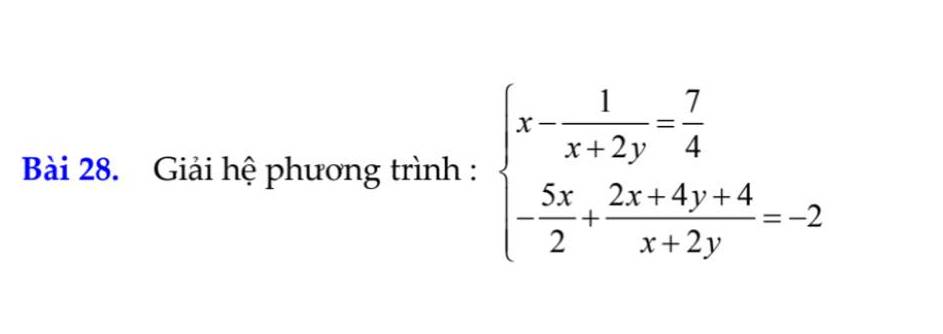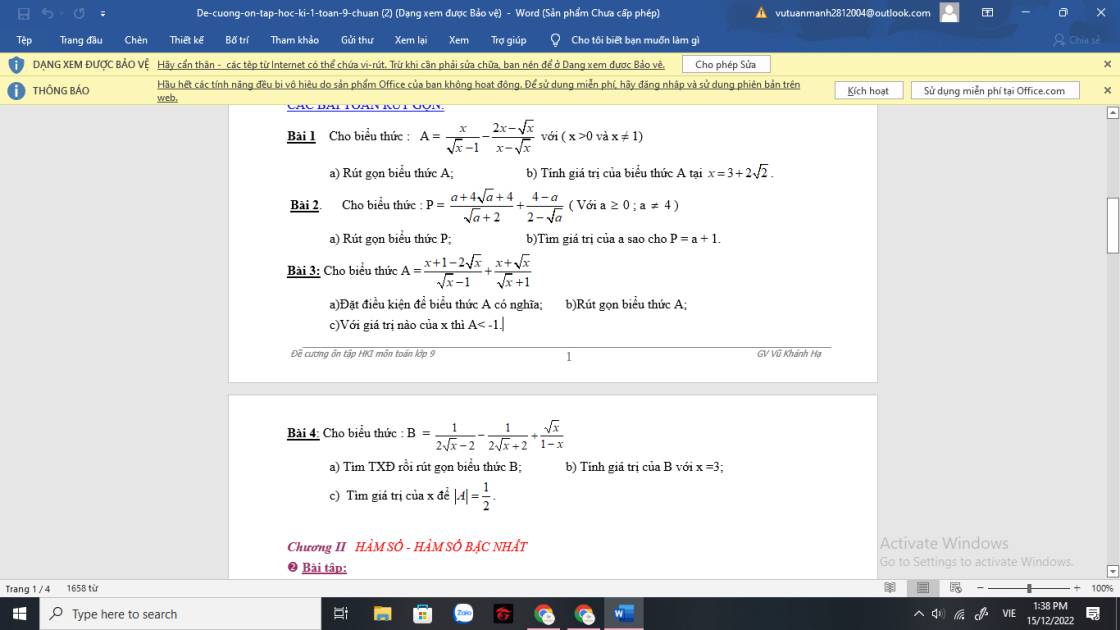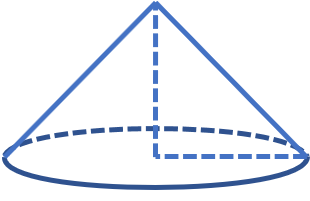
Hãy nhập câu hỏi của bạn vào đây, nếu là tài khoản VIP, bạn sẽ được ưu tiên trả lời.


M A O B E F H K P Q
a/
Ta có
AE = HE; BF = HF (2 tiếp tuyến cùng xp từ 1 điểm ngoài hình tròn thì khoảng cách từ điểm đó đến 2 tiếp điểm bằng nhau)
=> AE + BF = HE + HF = EF (dpcm)
b/ Gọi P; K; Q lần lượt là giao của OE; OM; OF với (O)
Ta có
sđ cung PA = sđ cung PH (Hai tiếp tuyến cùng xp từ 1 điểm ngoài hình tròn thì đường nối điểm đó với tâm chia đôi cung chắn bởi 2 tiếp điểm)
sđ cung QB = sđ cung QH (lý do như trên)
=> sđ cung PH + sđ cung QH = sđ cung PA + sđ cung QB
=> sđ cung APH = sđ cung BQH
Mà sđ cung APH + sđ cung BQH = sđ cung AKB
=> sđ cung APH = sđ cung BQH = \(\dfrac{sđcungAKB}{2}\) (1)
Ta có
sđ cung KA = sđ cung KB (Hai tiếp tuyến cùng xp từ 1 điểm ngoài hình tròn thì đường nối điểm đó với tâm chia đôi cung chắn bởi 2 tiếp điểm)
Mà sđ cung KA + sđ cung KB = sđ cung AKB
=> sđ cung KA = sđ cung KB = \(\dfrac{sđcungAKB}{2}\) (2)
Ta có
\(sđ\widehat{MOA}=sđcungKA=\dfrac{sđcungAKB}{2}\) (góc ở tâm đường tròn) (3)
\(sđ\widehat{FOE}=sđcungPHQ=sđcungPH+sđcungQH=\dfrac{sđcungAKB}{2}\) (góc ở tâm đường tròn) (4)
Từ (1) (2) (3) (4) \(\Rightarrow\widehat{MOA}=\widehat{FOE}\)

ĐKXĐ: \(x+2y\ne0\)
\(\left\{{}\begin{matrix}x-\dfrac{1}{x+2y}=\dfrac{7}{4}\\-\dfrac{5}{2}x+2+\dfrac{4}{x+2y}=-2\end{matrix}\right.\)
Đặt \(\dfrac{1}{x+2y}=z\) ta được hệ:
\(\left\{{}\begin{matrix}x-z=\dfrac{7}{4}\\-\dfrac{5}{2}x+4z=-4\end{matrix}\right.\) \(\Rightarrow\left\{{}\begin{matrix}x=2\\z=\dfrac{1}{4}\end{matrix}\right.\)
\(\Rightarrow\left\{{}\begin{matrix}x=2\\\dfrac{1}{x+2y}=\dfrac{1}{4}\end{matrix}\right.\) \(\Rightarrow\left\{{}\begin{matrix}x=2\\x+2y=4\end{matrix}\right.\)
\(\Rightarrow\left\{{}\begin{matrix}x=2\\y=1\end{matrix}\right.\)

\(x^2+3x+2+2\left(2-x\right)\sqrt{x-1}=0\left(x\ge1\right)\)
\(\Leftrightarrow x^2-x-2x+2-2\left(x-2\right)\sqrt{x-1}=0\)
\(\Leftrightarrow x\left(x-1\right)-2\left(x-1\right)-2\left(x-2\right)\sqrt{x-1}=0\)
\(\Leftrightarrow\left(x-1\right)\left(x-2\right)-2\left(x-2\right)\sqrt{x-1}=0\)
\(\Leftrightarrow\left(x-2\right)\sqrt{x-1}\left(\sqrt{x-1}-2\right)=0\)
\(\Leftrightarrow\left[{}\begin{matrix}x-2=0\\\sqrt{x-1}=0\\\sqrt{x-1}-2=0\end{matrix}\right.\)
\(\Leftrightarrow\left[{}\begin{matrix}x=2\left(tm\right)\\x-1=0\\\sqrt{x-1}=2\end{matrix}\right.\)
\(\Leftrightarrow\left[{}\begin{matrix}x=2\left(tm\right)\\x=1\left(tm\right)\\x-1=4\end{matrix}\right.\)
\(\Leftrightarrow\left[{}\begin{matrix}x=2\\x=1\\x=5\end{matrix}\right.\left(tm\right)\)
Vậy: \(x\in\left\{1;2;5\right\}\)

Chắc câu c quá, tại tổng 2 ô vuông của hình chữ nhật có 10 chấm tròn. =)
Em nghĩ là câu c vì thấy tổng của các chấm tròn ở mỗi miếng đều là 10.

Gọi số xe dự định tham gia chở hàng là x (xe) với x>4, x nguyên dương
Mỗi xe dự định chở khối lượng hàng là: \(\dfrac{20}{x}\) (tấn)
Số xe thực tế tham gia chở hàng là: \(x-4\) (xe)
Thực tế mỗi xe phải chở số hàng là: \(\dfrac{20}{x-4}\) (tấn)
Do thực tế mỗi xe phải chở nhiều hơn dự định là 5/6 tấn hàng nên ta có pt:
\(\dfrac{20}{x-4}-\dfrac{20}{x}=\dfrac{5}{6}\)
\(\Rightarrow24x-24\left(x-4\right)=x\left(x-4\right)\)
\(\Leftrightarrow x^2-4x-96=0\)
\(\Rightarrow\left[{}\begin{matrix}x=12\\x=-8\left(loại\right)\end{matrix}\right.\)
Vậy thực tế có \(12-4=8\) xe tham gia vận chuyển

Mình không thấy câu nào cả thì giúp kiểu gì lỗi ảnh hay sao ý

b) \(\sqrt{x^2}=\left|-8\right|\)
\(\Rightarrow\left|x\right|=8\)
\(\Rightarrow\left[{}\begin{matrix}x=8\\x=-8\end{matrix}\right.\)
d) \(\sqrt{9x^2}=\left|-12\right|\)
\(\Rightarrow\sqrt{\left(3x\right)^2}=12\)
\(\Rightarrow\left|3x\right|=12\)
\(\Rightarrow\left[{}\begin{matrix}3x=12\\3x=-12\end{matrix}\right.\)
\(\Rightarrow\left[{}\begin{matrix}x=\dfrac{12}{3}\\x=-\dfrac{12}{3}\end{matrix}\right.\)
\(\Rightarrow\left[{}\begin{matrix}x=4\\x=-4\end{matrix}\right.\)

ĐKXĐ: \(\left\{{}\begin{matrix}2x-3>=0\\x+1>=0\end{matrix}\right.\)
=>\(\left\{{}\begin{matrix}x>=\dfrac{3}{2}\\x>=-1\end{matrix}\right.\)
=>\(x>=\dfrac{3}{2}\)
\(\sqrt{2x-3}-\sqrt{x+1}=x-4\)
=>\(\dfrac{2x-3-x-1}{\sqrt{2x-3}+\sqrt{x+1}}-\left(x-4\right)=0\)
=>\(\left(x-4\right)\left(\dfrac{1}{\sqrt{2x-3}+\sqrt{x+1}}-1\right)=0\)
=>x-4=0
=>x=4(nhận)









a: Thay m=3 vào hệ, ta được:
\(\left\{{}\begin{matrix}3x+2y=1\\3x+\left(3+1\right)y=-1\end{matrix}\right.\)
=>\(\left\{{}\begin{matrix}3x+2y=1\\3x+4y=-1\end{matrix}\right.\Leftrightarrow\left\{{}\begin{matrix}3x+4y-3x-2y=-1-1\\3x+2y=1\end{matrix}\right.\)
=>\(\left\{{}\begin{matrix}2y=-2\\3x=1-2y=1-\left(-2\right)=3\end{matrix}\right.\Leftrightarrow\left\{{}\begin{matrix}y=-1\\x=1\end{matrix}\right.\)
b:
để hệ có vô số nghiệm thì \(\dfrac{m}{3}=\dfrac{2}{m+1}=\dfrac{1}{-1}\)
=>\(\left\{{}\begin{matrix}m^2+m=6\\m+1=-2\end{matrix}\right.\Leftrightarrow\left\{{}\begin{matrix}\left(m+3\right)\left(m-2\right)=0\\m=-3\end{matrix}\right.\)
=>m=-3
Để hệ vô nghiệm thì \(\dfrac{m}{3}=\dfrac{2}{m+1}\ne\dfrac{1}{-1}=-1\)
=>\(\left\{{}\begin{matrix}m^2+m=6\\m+1\ne-2\end{matrix}\right.\Leftrightarrow\left\{{}\begin{matrix}\left(m+3\right)\left(m-2\right)=0\\m\ne-3\end{matrix}\right.\)
=>m=2
Để hệ có nghiệm duy nhất thì \(\dfrac{m}{3}\ne\dfrac{2}{m+1}\)
=>\(m^2+m\ne6\)
=>\(m^2+m-6\ne0\)
=>(m+3)(m-2)<>0
=>\(m\notin\left\{-3;2\right\}\)
\(\left\{{}\begin{matrix}mx+2y=1\\3x+\left(m+1\right)y=-1\end{matrix}\right.\Leftrightarrow\left\{{}\begin{matrix}3mx+6y=3\\3mx+\left(m^2+m\right)y=-m\end{matrix}\right.\)
=>\(\left\{{}\begin{matrix}3mx+\left(m^2+m\right)y-3mx-6y=-m-3\\mx+2y=1\end{matrix}\right.\)
=>\(\left\{{}\begin{matrix}y\left(m+3\right)\left(m-2\right)=-\left(m+3\right)\\mx+2y=1\end{matrix}\right.\Leftrightarrow\left\{{}\begin{matrix}y=\dfrac{-1}{m-2}\\mx=1-2y=1+\dfrac{2}{m-2}=\dfrac{m-2+2}{m-2}=\dfrac{m}{m-2}\end{matrix}\right.\)
=>\(\left\{{}\begin{matrix}y=-\dfrac{1}{m-2}\\x=\dfrac{1}{m-2}\end{matrix}\right.\)
c: Để hệ có nghiệm duy nhất là số nguyên thì \(\left\{{}\begin{matrix}m\in\left\{-3;2\right\}\\m-2\inƯC\left(1;-1\right)\end{matrix}\right.\Leftrightarrow\left\{{}\begin{matrix}m\in\left\{-3;2\right\}\\m-2\in\left\{1;-1\right\}\end{matrix}\right.\)
=>\(m\in\left\{3;1\right\}\)